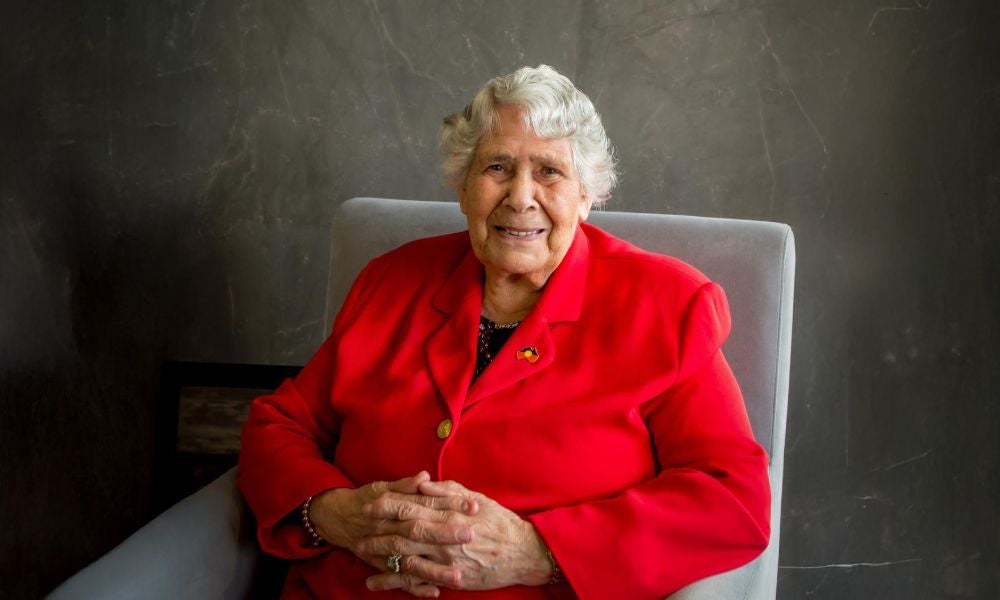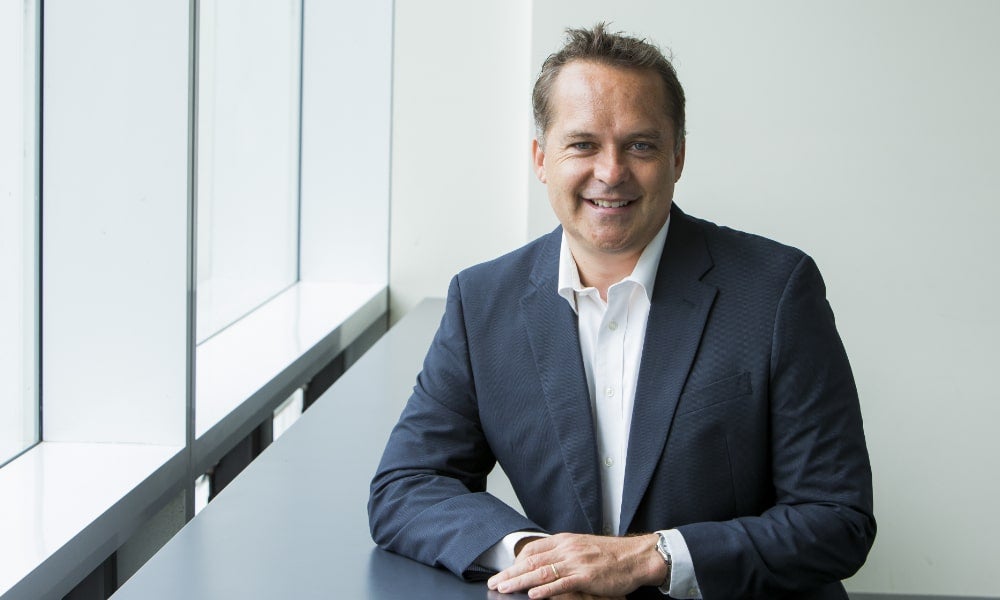How to prime yourself to be more heroic
Learn how ordinary managers and professionals can unlock their heroic potential through purpose, values, empathy, and receptiveness
In a world where demanding developments often require extraordinary responses, the science of heroism offers powerful insights into how ordinary people can rise to meet critical moments. Recent research published in the Encyclopedia of Heroism Studies reveals that heroic action isn’t necessarily rooted in superhuman or even special abilities, but rather, in specific self-regulatory processes that anyone can practice. By understanding the psychology behind heroic behaviour, we can all cultivate the mindset, bravery, and focus needed to step up when challenging circumstances demand more from us.
After the tragic murder of her 11-year-old son Luke by his father in 2014, Rosie Batty responded with extraordinary courage, purpose, empathy, and resilience, turning her grief into a national campaign against family violence. Guided by deep personal values of justice, compassion, and the belief that no one should suffer in silence, she became a powerful voice for systemic change. Her advocacy was driven by a commitment to protect vulnerable women and children, and a determination to hold institutions accountable. Rosie’s unwavering authenticity and moral clarity – even in the face of instances of public ridicule and criticism – inspired public awareness, policy reform, and the Victorian Royal Commission into Family Violence.

Dr Lowitja O’Donoghue AC CBE DSG (1932-2024) was forcibly removed from her mother at the age of two and was raised in a Lutheran girls’ home, where she was denied the right to speak her Yankunytjatjara language or reconnect with her family for over 30 years. Despite having been denied her identity and family, she was guided by values of dignity, respect, and service to transform personal trauma into purposeful leadership. Dr Lowitja became the first Aboriginal nurse at the Royal Adelaide Hospital and later chaired the Aboriginal and Torres Strait Islander Commission.
Despite routine criticism for being either too radical (from some perspectives) and too diplomatic (from others), Dr Lowitja served as a powerful force for reconciliation, respectful partnership, and ensuring that Indigenous voices are embedded in decision-making processes about health and education policy-making. For instance, the Lowitja Institute’s 2018 report on Changing the Narrative of Aboriginal and Torres Strait Islander Health and Wellbeing triggered greater focus on the resilience and capabilities (rather than deficits) of Indigenous communities, thereby promoting more collaborative, culturally appropriate, and effective health strategies.

These remarkable displays illustrate how focused self-regulation can enable heroic action – not through superhuman abilities – but through disciplined management of our attention, thoughts, emotions, and actions in service of personal values and a greater purpose, according to Professor Peter Heslin, from the School of Management and Governance at the UNSW Business School.
What defines an act as heroic?
Objective conceptions of heroism define it as meeting observable meritorious criteria like self-sacrifice, upholding moral values, ideals, and commitments even under duress, fighting injustice, and showing extraordinary courage such as risking one’s life to save others – as illustrated by Inspector Amy Scott who approached (without backup) and shot the Westfield Bondi Junction knife attacker, thus stopping the stabbing rampage and likely saving many lives.

Subjective conceptions of heroism, by contrast, depend on social or cultural perceptions; a given act may be seen as either heroic or villainous, depending on one’s perspective. For instance, an individual who is labelled a terrorist by some groups is often regarded as a freedom fighter by others. This illustrates the relativity inherent in subjective judgments of heroism.
Heroic acts may also emerge during dramatic life-or-death moments, like Inspector Scott's actions, or through persistent struggle in the service of other people and cherished principles, as illustrated by Rosie Batty and Dr O’Donoghue.
In his recent paper on Self-Regulation and Heroism, Prof. Heslin explores how nudging ourselves to enter the “fundamental state of leadership”, as defined by University of Michigan Professor Bob Quinn, can enable individuals to act heroically in everyday situations.
The normal state vs the fundamental state of leadership
Most of the time, most of us are in the “normal state” – a condition characterised by comfort-centeredness, external-directedness, self-focus, and internal closure. This state prioritises feeling comfortable and in control, taking the path of least resistance, hoping for validation by others, and playing it safe by avoiding conflict or discomfort.
“Yet a concern with preserving what already is impedes our creation of new skills, outcomes, and contributions,” Prof. Heslin explains. “Realising that one has drifted into being perpetually comfort-centred can ultimately induce feelings of futility and meaninglessness.”
Read more: Five important things evidence tells us about successful leadership
The normal state contrasts with the fundamental state of leadership, which involves being:
- purpose-centred: driven by a deep commitment to something bigger than ourselves
- internally directed: guided more by our personal values than a concern for others’ approval
- other-focused: being deeply empathetic and striving to serve others or a greater purpose, and
- externally open: engaged with and responsive to others’ concerns and perspectives.
These qualities of the fundamental state of leadership can enable individuals to muster the courage and focus to face challenges heroically, rather than timidly dodge or disengage from them.
Four transformative questions to prime heroic action
By asking ourselves four transformative questions, we can shift from the normal state to the fundamental state that is more conducive to heroic action.
1. What result do I want to create? Problem-solving typically focuses on eliminating something negative or unwanted that we hope to eliminate. By instead asking “What result do I want to create?” we shift from a reactive to a proactive, creative posture.
“Seriously asking ‘What result do I want to create?’ instead focuses us on identifying something positive that we want to bring into existence,” suggests Prof. Heslin. “It triggers a shift from a reactive to a proactive orientation, challenging us to think outside our comfort zone.” This shift generates a sense of purpose and determination, enabling inspirational leadership that motivates others to join us in pursuing higher goals and persisting to achieve them.

2. Am I internally directed? When primarily driven by others’ expectations, the disconnect between our values and behaviours creates inauthenticity that others detect. The question “Am I internally directed?” focuses attention on our core values, rather than being preoccupied with others’ external impressions of us.
“Intentionally clarifying our values can create a sense of personal growth, being on a mission, and awareness of becoming the kind of person we want to be,” Prof. Heslin notes. This clarity improves emotional regulation and increases willingness to courageously confront challenging situations.
To discover internal direction, he suggests asking: “What would my most authentic, best version of myself do in this situation?” or “What might my future self be most proud of that my present self did when confronted with this dilemma?”
3. What do others seek in this situation? While self-interest drives normal behaviour, heroism requires balancing personal concerns with others’ needs. Asking “What do others seek in this situation?” increases awareness of potentially isolating self-interest and myopia.
“Being other-focused means genuinely striving to understand and help others attain their goals or the greater good, even if doing so incurs personal costs,” Prof. Heslin explains. This approach recognises our interdependence and that whatever we contribute to our social ecology tends to return to us. As motivational speaker Zig Ziglar often observed, “You can do anything you want, if you just help enough other people get what they want.”
Subscribe to BusinessThink for the latest research, analysis and insights from UNSW Business School
4. Am I open to alternative strategies? The normal tendency is to avoid challenges to established knowledge and ways of doing this. Asking “Am I open to discovering alternative strategies?” increases self-awareness of our settled mindsets and promotes exploration over certainty.
“When exploring, we often soon realise our progress and success depend on seeking and seriously considering others’ perspectives and feedback,” Prof. Heslin writes. This exploration builds capacity to improvise, strategise, and co-create solutions to complex challenges.
Practical applications
The research suggests business managers and professionals can implement these concepts by (i) recognising when they have previously been in the fundamental state of leadership, and (ii) intentionally triggering that state by reflecting upon and addressing the four transformative questions, during particularly challenging moments.
First, recall a previous challenging professional situation where you simultaneously demonstrated results-centeredness, internal direction, other-focus, and external openness – either in a work, community, or family context. Composing a ‘reflected best self portrait’ by following the steps outlined here can help you identify such moments when you were at your very best. This recollection can build your self-efficacy (i.e., confidence in your capacity) to again enter the fundamental state, when needed.
Second, when facing a particularly demanding quandary, deliberately ask yourself the four transformative questions regarding that predicament to shift yourself into the fundamental state. Doing so can gin up your latent focus, integrity, trust, and adaptability – critical elements for heroic action.

Case studies outlined by Professors Ryan and Robert Quinn in their book Lift: Becoming a Positive Force in Any Situation illustrate how this approach has proved effective for leaders facing major organisational change, ethical dilemmas, and interpersonal conflicts. Those who applied these techniques exhibited increased confidence in difficult conversations, greater resilience during setbacks, an enhanced capacity to inspire team members, and thus effective action during crises and change.
Heroism in everyday business contexts
Heroism in business doesn’t require extraordinary circumstances or talents. It manifests in everyday events, such as when we advocate for an ethical approach, despite pressure, support colleagues through professional or personal challenges, or strive to advance the greater good despite potential personal perils.
“To meet our massive environmental, social, political, economic, equity, and other human challenges, we need more heroes! No one is always at their best or expected to rise to meet every challenge. Yet heroism does not require being heroic at all times or in all arenas,” Prof. Heslin concludes. “Rather, heroism involves courageously stepping up to engage with pressing challenges that you feel compelled to address, potentially enabled by intentionally entering the fundamental state of leadership to unlock your latent potential for truly heroic action.”
